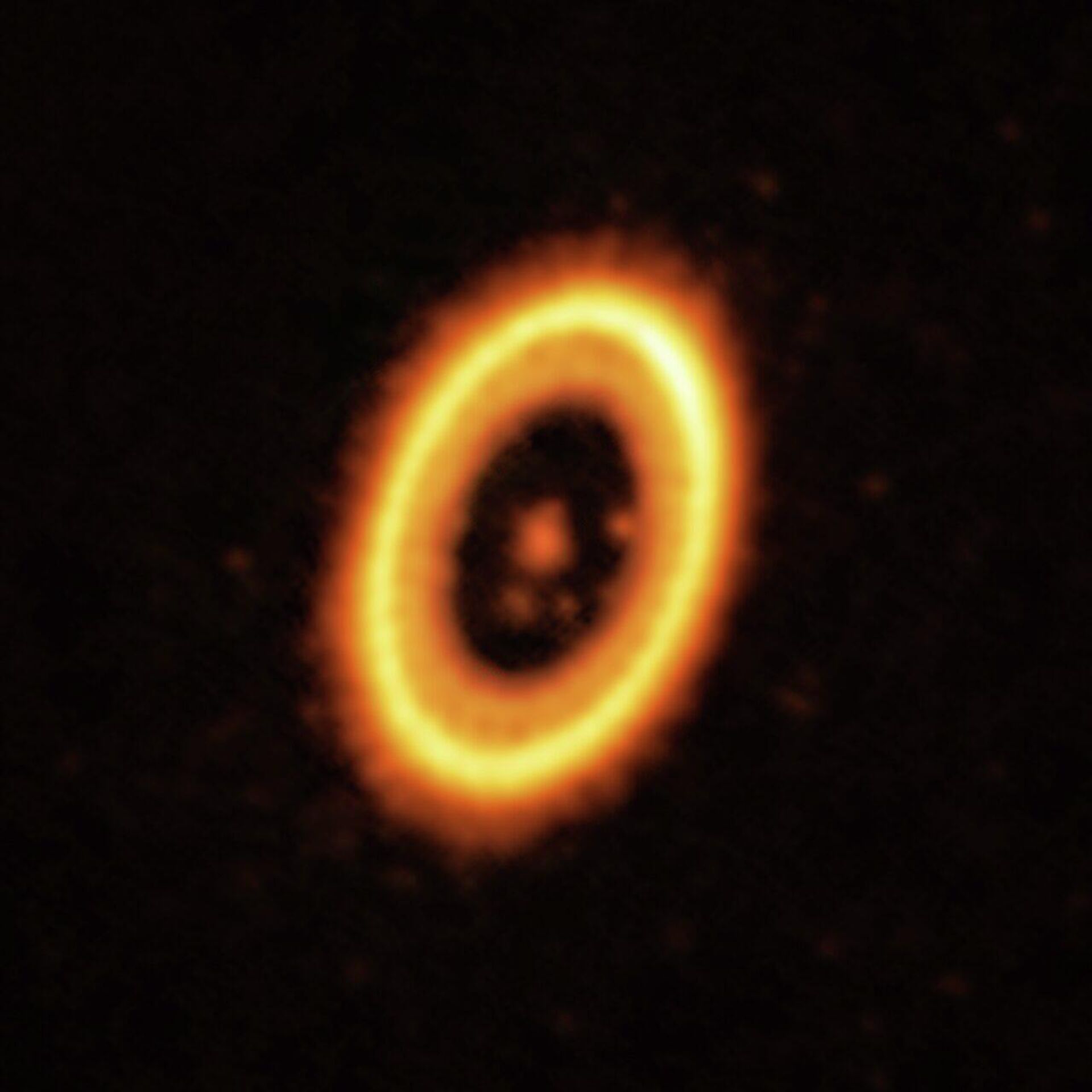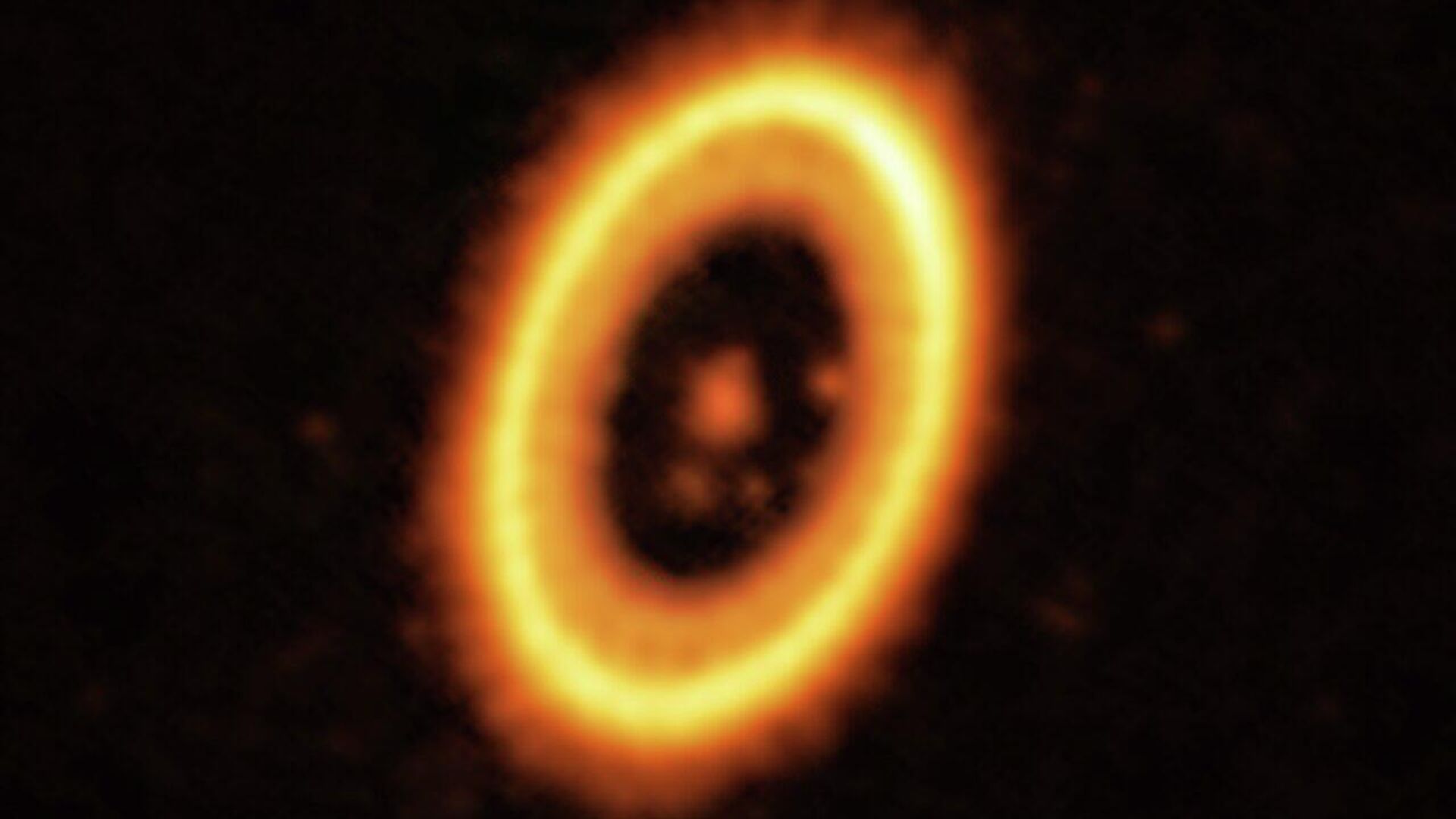BFFs? Astronomers Spot Two Planets Appearing to Share Same Orbit
Subscribe
In what may be the ultimate “match made in heaven,” two planets in a distant star system might be sharing the same orbit. However, another theory is much darker.
A Spanish-led team of astronomers believe they have spotted evidence of a second planet sharing the orbit of PDS 70b, a gas giant orbiting a star 370 light-years away.
The PDS 70 system is fascinating to astronomers for a number of reasons, including that it’s an extremely young star with a protoplanetary disk surrounding it, indicating several planets are in the process of formation.
One, PDS-70b, is several times the size of Jupiter and orbits about 21.5 astronomical units (au) away from the star - further than the distance of Uranus from our sun.
It was the first protoplanet to be directly imaged by humans, being spotted in 2018 by a group of astronomers at the Max Planck Institute for Astronomy in Heidelberg, Germany, who were using the European Southern Observatory (ESO) in northern Chile.
Now, astronomers believe they’ve made another discovery using the telescope: a cloud of debris in the same orbit as PDS 70b.
At the moment it’s being called a Trojan, which is a term used for asteroids that “follow” planets in their orbit around their host star, typically at the Lagrangian Points, where gravity between the planet and star is at equilibrium. However, the scientists aren’t dismissing the possibility that the object is either a planet still in formation or perhaps the remnants of one already torn apart.

This image, taken with the Atacama Large Millimeter/submillimeter Array (ALMA), in which ESO is a partner, shows the young planetary system PDS 70, located nearly 400 light-years away from Earth. The system features a star at its centre, around which the planet PDS 70b is orbiting. On the same orbit as PDS 70b, astronomers have detected a cloud of debris that could be the building blocks of a new planet or the remnants of one already formed. The ring-like structure that dominates the image is a circumstellar disc of material, out of which planets are forming. There is in fact another planet in this system: PDS 70c, seen at 3 o’clock right next to the inner rim of the disc.
"We can imagine that a planet can share its orbit with thousands of asteroids as in the case of Jupiter, but it is mind-blowing to me that planets could share the same orbit," lead author Olga Balsalobre-Ruza of the Center for Astrobiology in Madrid said in a statement.
According to co-author Jorge Lillo-Box of Madrid’s Center for Astrobiology, planets sharing an orbit "have so far been like unicorns: they are allowed to exist by theory, but no one has ever detected them.”
For two planets to share the same orbit, they would have to orbit at exactly the same speed; otherwise, one would eventually catch up with the other and they would collide. Sometimes, planets can cross paths, but if their orbit is in resonance, then they will never find themselves at the same place at the same time. Pluto’s orbit crosses that of Neptune, although Pluto has not been considered a planet since 2006, when it was downgraded by the International Astronomical Union to a Kuiper Belt Object or Minor Planet following the discovery of other similar objects beyond Neptune’s orbit.
In order for the scientists to confirm their find, they will have to wait until 2026 because the objects orbit their host star so slowly: PDS 70b takes 119 years to complete a single orbit.
The group's findings are summarized in an article published in the journal Astronomy and Astrophysics.


